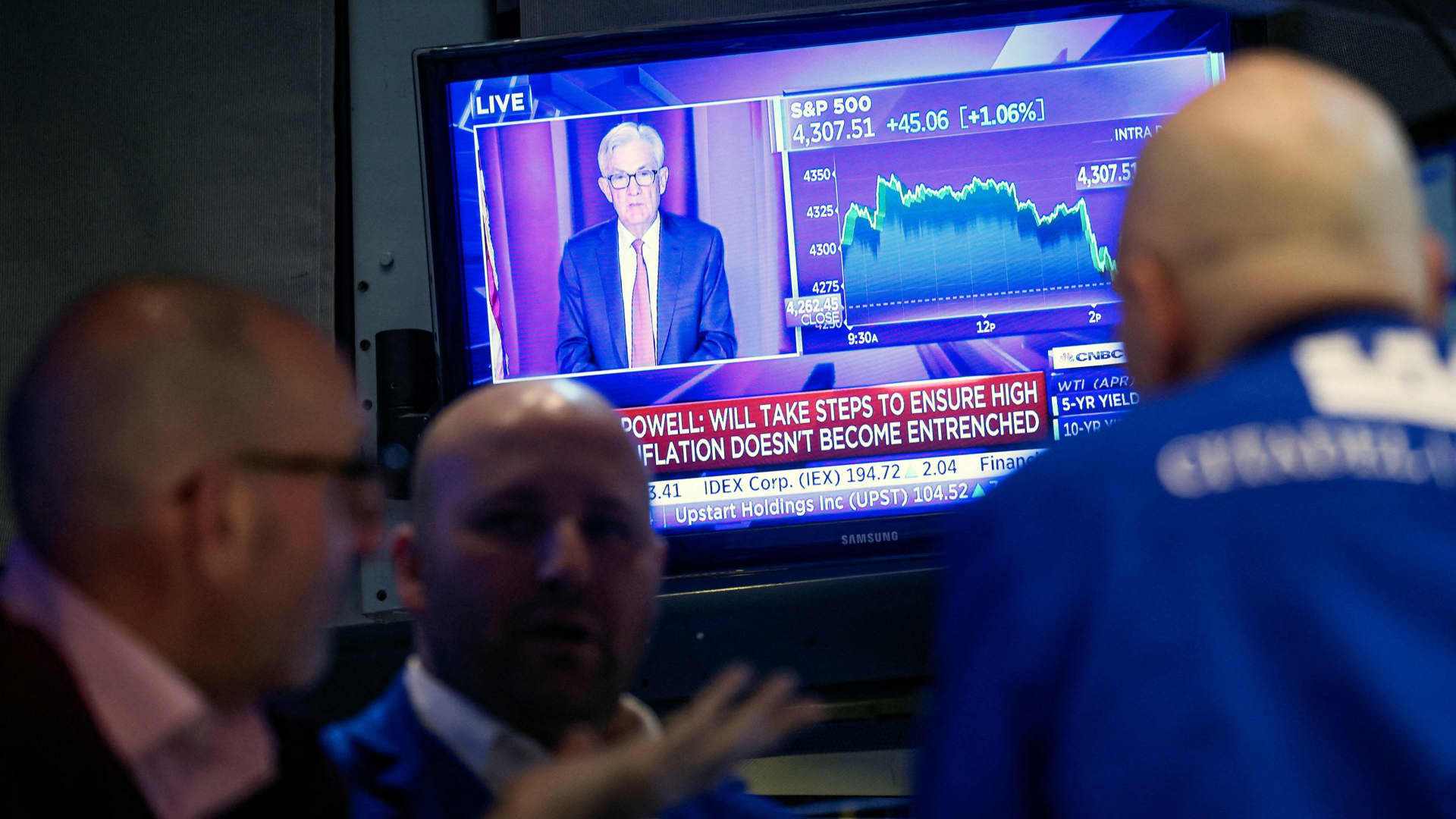
The S&P 500 rose Thursday, following back-to-back days of sharp gains, as investors digested the latest news out of Ukraine and the outcome of the Federal Reserve meeting.
The broad market average increased by 0.4%. The Dow Jones Industrial Average added 162 points, or 0.4%. The Nasdaq Composite added 0.2%. The moves come after a massive two-day rally for stocks.
“We’re on day three of potential gains here, and a lot of investors are going in thinking maybe there are calmer waters,” said Jeff Kilburg, chief investment office of Sanctuary Wealth. “The Fed meeting ended up being a non-event, getting past it was a big mental component for the marketplace. As we start to get past it and realize uncertainty in the Russia-Ukraine situation feeds into their formula, it puts a short-term bullish sentiment in the market. It’s nice to see a little consistency.”
Energy stocks led the market higher as West Texas Intermediate crude futures, the U.S. oil benchmark, jumped more than 7% to back above $100. Devon Energy and Diamondback climbed 7% and 6%, respectively. The Energy Select Sector SPDR Fund rose 3.3%. The sector is the only one on pace for a down week, but also the only one in the green for the year.
American Express led the Dow higher with a gain of more than 3% after Bank of America kept its buy rating on the stock.
Stocks climbed even after the Kremlin reportedly dismissed news of progress in Ukraine-Russia peace talks. According to Bloomberg News, a Kremlin spokesman those reports were “wrong.”
On Wednesday, the Financial Times reported that both countries had made “significant progress” on a peace plan and Russian withdrawal from Ukraine. That FT report helped stocks rally for a second day Wednesday.
Thursday marked a key day for Russia to pay coupons on its sovereign bonds, which were due on Wednesday, to avoid default. Reuters, citing a source familiar with the situation, reported on Thursday that Russia made two payment in dollars and that the money would soon be distributed to bondholders.
The debt market drama comes as Russia has largely been cut out of the global financial system as a result of its war in Ukraine. In order to avoid default, Russia needed to make the payments in dollars and not the rapidly weakening ruble, and it was unclear if foreign banks would process the payments or allow Russia to access its accounts.
The S&P 500 jumped more than 3% in the last two sessions, while the Dow Jones Industrial Average posted back-to-back surges of more than 500 points.
“The two-day rally in the S&P 500 has lifted the index by 4.4%, illustrating how rapidly markets can turn if investor perception of geopolitical risks change,” Mark Haefele, chief investment officer at UBS Global Wealth Management, said in a note Thursday. “It also reinforces our view that simply selling risk assets is not the best response to the war in Ukraine.”
The Fed
Wall Street was also digesting the latest moves from the Federal Reserve. The Fed hiked its benchmark interest rate for the first time since 2018 and signaled six more hikes this year, spurring a relief rally in stocks.
“The dot plot shows they’re behind the curve, and we all know they’re behind the curve, and they’re trying to fix it,” said Stephanie Link, chief investment strategist and portfolio manager at Hightower Advisors. “At least they’re telling the market ‘we’re trying to fix it.'”
Jeffrey Gundlach, CEO of DoubleLine Capital, said on “Closing Bell: Overtime” that he expected markets to rally between now and the next Fed meeting in May after selling off sharply to start the year. He pointed to recent high readings on the Cboe Volatility Index, often called Wall Street’s fear gauge, as a sign that the selling had gone far enough, at least in the near term.
“When the VIX gets above 35, I don’t care how bad the tape looks, I don’t care how bad the geopolitics look, you’re supposed to get more bullish, not more bearish. And you get an oversold bounce,” Gundlach said.
The Labor Department reported Thursday that the number of jobless claims filed last week totaled 214,000, which was better than the Dow Jones estimate of 220,000 and a decline from 15,000 in the previous week.
—CNBC’s Pippa Stevens and Jesse Pound contributed reporting.




